Hyundai Bayon vs Mazda 2 - Differences and prices compared
Costs and Efficiency:
Price and efficiency are key factors when choosing a car – and this is often where the real differences emerge.
Mazda 2 has a decisively advantage in terms of price – it starts at 14200 £, while the Hyundai Bayon costs 20100 £. That’s a price difference of around 5837 £.
Fuel consumption also shows a difference: Mazda 2 manages with 4.70 L and is therefore a bit more efficient than the Hyundai Bayon with 5.40 L. The difference is about 0.70 L per 100 km.
Engine and Performance:
Power, torque and acceleration say a lot about how a car feels on the road. This is where you see which model delivers more driving dynamics.
When it comes to engine power, the Mazda 2 has a somewhat edge – offering 115 HP compared to 100 HP. That’s roughly 15 HP more horsepower.
In acceleration from 0 to 100 km/h, the Mazda 2 is evident quicker – completing the sprint in 9.10 s, while the Hyundai Bayon takes 11.30 s. That’s about 2.20 s faster.
In terms of top speed, the Mazda 2 performs slightly better – reaching 200 km/h, while the Hyundai Bayon tops out at 179 km/h. The difference is around 21 km/h.
There’s also a difference in torque: Hyundai Bayon pulls evident stronger with 200 Nm compared to 151 Nm. That’s about 49 Nm difference.
Space and Everyday Use:
Cabin size, boot volume and payload all play a role in everyday practicality. Here, comfort and flexibility make the difference.
Seats: offers more seating capacity – vs .
In curb weight, Mazda 2 is barely noticeable lighter – 1099 kg compared to 1170 kg. The difference is around 71 kg.
In terms of boot space, the Hyundai Bayon offers evident more room – 411 L compared to 280 L. That’s a difference of about 131 L.
In maximum load capacity, the Hyundai Bayon performs distinct better – up to 1205 L, which is about 255 L more than the Mazda 2.
When it comes to payload, Hyundai Bayon barely noticeable takes the win – 465 kg compared to 437 kg. That’s a difference of about 28 kg.
Who comes out on top?
Overall, the Mazda 2 shows itself to be leaves the rival little chance and secures the title of DriveDuel Champion.
It convinces with the more balanced overall package and proves to be the more versatile choice for everyday use.
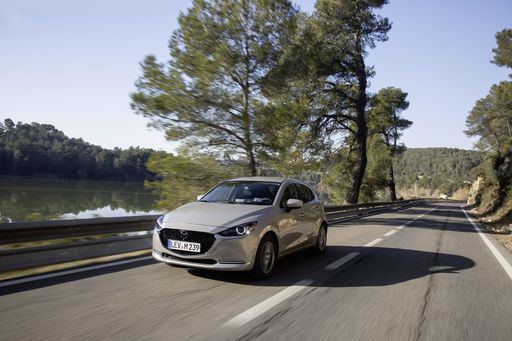 @ Mazda Motor Corporation
@ Mazda Motor Corporation
Mazda 2
Costs and Consumption
View detailed analysis
Engine and Performance
View detailed analysis
Dimensions and Body
View detailed analysis
Hyundai Bayon
The Hyundai Bayon slips neatly between city runabout and small SUV, offering surprising practicality and a fresh, confident design that stands out in urban traffic. It's an easy buy for shoppers who want smart packaging, tidy handling and a dash of personality without fuss — a sensible little crossover that makes everyday driving a bit more enjoyable.
details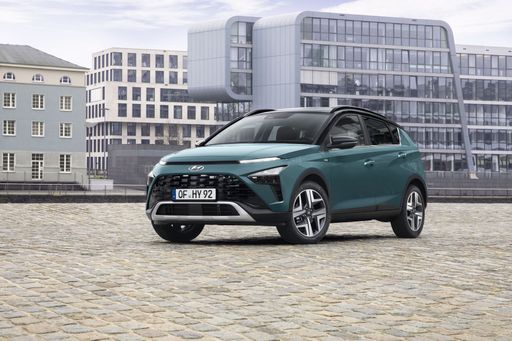 @ Hyundai Motor Company
@ Hyundai Motor Company
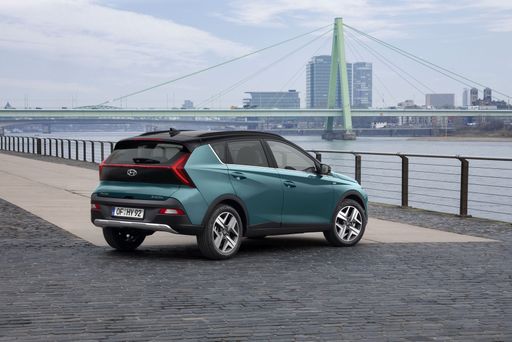 @ Hyundai Motor Company
@ Hyundai Motor Company
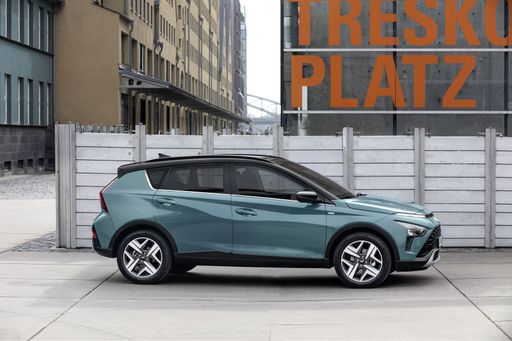 @ Hyundai Motor Company
@ Hyundai Motor Company
 @ Hyundai Motor Company
@ Hyundai Motor Company
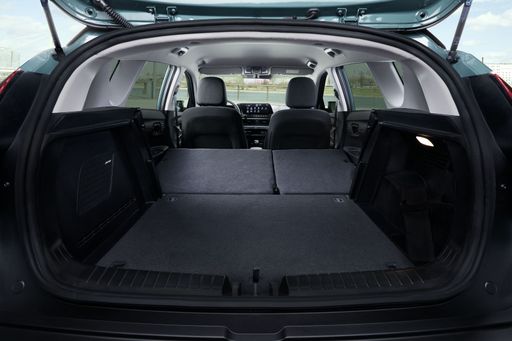 @ Hyundai Motor Company
@ Hyundai Motor Company
Mazda 2
The Mazda 2 is a pocket-sized charmer that makes city driving feel light and lively, wrapped in sleek styling that looks right at home on trendy streets. Buyers who want an economical, fun-to-drive hatch with surprisingly grown-up cabin quality will find it hard to resist — it’s the kind of everyday companion that puts a grin on your face every time you head out.
details @ Mazda Motor Corporation
@ Mazda Motor Corporation
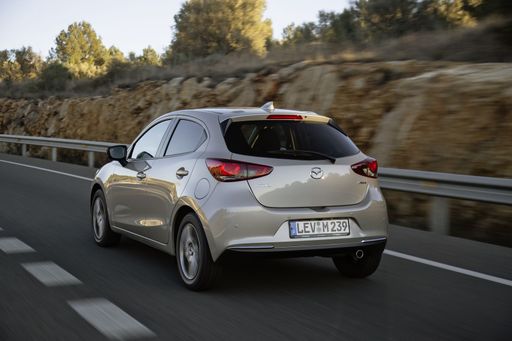 @ Mazda Motor Corporation
@ Mazda Motor Corporation
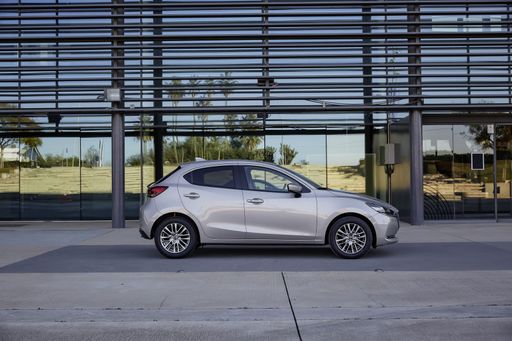 @ Mazda Motor Corporation
@ Mazda Motor Corporation
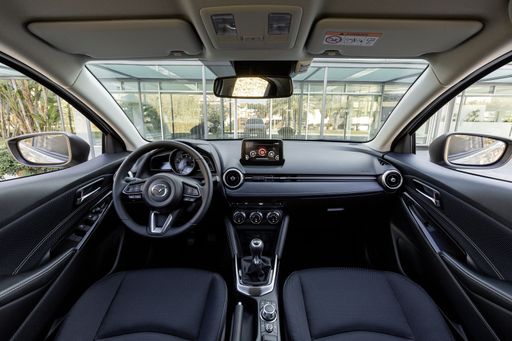 @ Mazda Motor Corporation
@ Mazda Motor Corporation
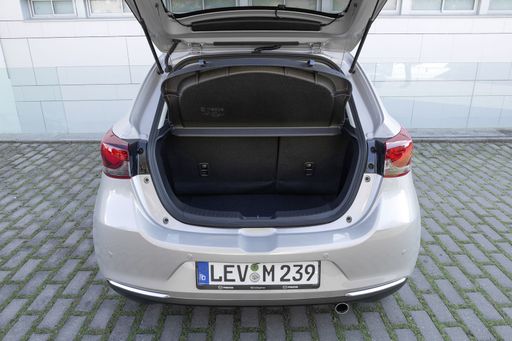 @ Mazda Motor Corporation
@ Mazda Motor Corporation
 @ Hyundai Motor Company
@ Hyundai Motor Company
|
 @ Mazda Motor Corporation
@ Mazda Motor Corporation
|
|
|
|
Costs and Consumption |
|
|---|---|
|
Price
20100 - 25800 £
|
Price
14200 - 21700 £
|
|
Consumption L/100km
5.4 - 5.5 L
|
Consumption L/100km
4.7 - 5.4 L
|
|
Consumption kWh/100km
-
|
Consumption kWh/100km
-
|
|
Electric Range
-
|
Electric Range
-
|
|
Battery Capacity
-
|
Battery Capacity
-
|
|
co2
124 g/km
|
co2
107 - 122 g/km
|
|
Fuel tank capacity
40 L
|
Fuel tank capacity
44 L
|
Dimensions and Body |
|
|---|---|
|
Body Type
SUV
|
Body Type
Hatchback
|
|
Seats
5
|
Seats
5
|
|
Doors
5
|
Doors
5
|
|
Curb weight
1170 - 1195 kg
|
Curb weight
1099 - 1120 kg
|
|
Trunk capacity
411 L
|
Trunk capacity
280 L
|
|
Length
4180 mm
|
Length
4080 mm
|
|
Width
1775 mm
|
Width
1695 mm
|
|
Height
1500 mm
|
Height
1515 mm
|
|
Max trunk capacity
1205 L
|
Max trunk capacity
950 L
|
|
Payload
460 - 465 kg
|
Payload
420 - 437 kg
|
Engine and Performance |
|
|---|---|
|
Engine Type
Petrol
|
Engine Type
Petrol MHEV, Petrol
|
|
Transmission
Manuel, Automatic
|
Transmission
Manuel, Automatic
|
|
Transmission Detail
Manual Gearbox, Dual-Clutch Automatic
|
Transmission Detail
Manual Gearbox, Automatic Gearbox
|
|
Drive Type
Front-Wheel Drive
|
Drive Type
Front-Wheel Drive
|
|
Power HP
100 HP
|
Power HP
75 - 115 HP
|
|
Acceleration 0-100km/h
11.3 - 12.4 s
|
Acceleration 0-100km/h
9.1 - 12.1 s
|
|
Max Speed
176 - 179 km/h
|
Max Speed
171 - 200 km/h
|
|
Torque
172 - 200 Nm
|
Torque
143 - 151 Nm
|
|
Number of Cylinders
3
|
Number of Cylinders
4
|
|
Power kW
74 kW
|
Power kW
55 - 85 kW
|
|
Engine capacity
998 cm3
|
Engine capacity
1496 cm3
|
General |
|
|---|---|
|
Model Year
2024
|
Model Year
2023
|
|
CO2 Efficiency Class
D
|
CO2 Efficiency Class
C, D
|
|
Brand
Hyundai
|
Brand
Mazda
|
What drivetrain options does the Hyundai Bayon have?
The Hyundai Bayon is available as Front-Wheel Drive.
The prices and data displayed are estimates based on German list prices and may vary by country. This information is not legally binding.
